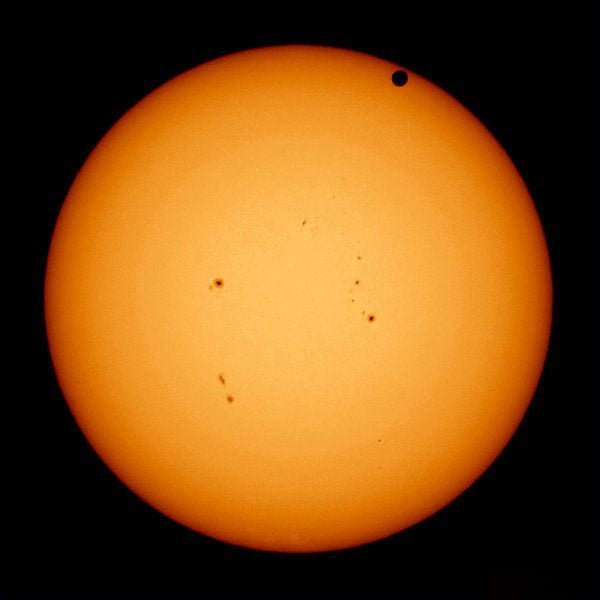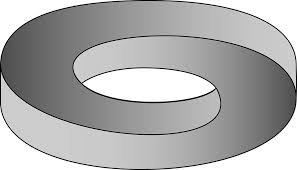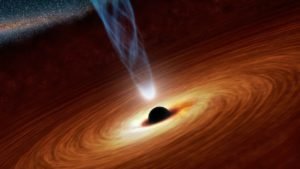Cheeru: So you want to know about Venus?

Viju: I want to know how Venus is visible through a telescope?


Source: images are in the public domain (NASA) Images processed by Ricardo Nunes downloaded from http://www.astrosurf.com/nunes/explor/explor_m10.htm
Date: 5 February 1974
Author: NASA or Ricardo Nunes
Cheeru: Venus is Earth’s “sister planet” because of their similar size, mass, proximity to the Sun, and bulk composition.
Viju-But what about telescope?
Cheeru: Although any telescope will allow the phases of Venus to be seen, the planet is a notoriously difficult one to observe.
Viju: why?
Cheeru: Firstly, whenever the planet is visible (shortly before sunrise or after sunset)it is positioned at a low altitude (angle above the horizon) where it is immersed in haze and atmospheric turbulence, which adversely affects the quality of the image seen in the telescope. Venus itself is permanently cloaked in thick cloud, so its surface features are never visible through telescopes.
where it is immersed in haze and atmospheric turbulence, which adversely affects the quality of the image seen in the telescope. Venus itself is permanently cloaked in thick cloud, so its surface features are never visible through telescopes.
Viju: how really is the atmosphere of venus?
Cheeru: Venus is shrouded by an opaque layer of highly reflective clouds of sulphuric acid, preventing its surface from being seen from space in light.
Studies have suggested that billions of years ago Venus’s atmosphere was much more like Earth’s than it is now, and that there may have been substantial quantities of liquid water on the surface, but after a period of 600 million to several billion years.
Little more was discovered about Venus until the 20th century. Its almost featureless disc gave no hint what its surface might be like, and it was only with the development of spectroscopic, radar and ultraviolet observations that more of its secrets were revealed.
Viju: Ultraviolet observations? Spectroscopic observations? Radar observations??
Cheeru: From Wikipedia, The first ultraviolet observations were carried out in the 1920s, when Frank E. Ross found that ultraviolet photographs revealed considerable detail that was absent in visible and infrared radiation. He suggested that it was due to a dense, yellow lower atmosphere with high cirrus clouds above it. Spectroscopic observations gave the first clues about the Venusian rotation.
Vesto Slipher tried to measure the Doppler effect of light from Venus, but found he could not detect any rotation. He surmised the planet must have a much longer rotation period than had previously been thought.Later work in the 1950s showed the rotation was retrograde.
Cheeru: Radar Observation of
Viju: These things are looking so complicated.
Cheeru: If you want to know these things in easy language just read the scienceteen magazine or ask on www.scienceteen.com.
Viju: Is really?
Cheeru: Of course. Even I learn so many things from this website.
Viju: Ok I will see but tell me something about transit of venus?
Cheeru: The Venusian orbit is slightly inclined relative to Earth’s orbit; thus, when the planet passes between Earth and the Sun, it usually does not cross the face of the Sun. Transit of Venus occurs when the planets coincides with its presence in the plane of Earth’s orbit.
Viju: It occurs after how much time
Cheeru: Transits of Venus occur in cycles of 243 years with the current pattern of transits being pairs of transits separated by eight years, at intervals of about 105.5 years or 121.5 years.

Description: Transit of Venus, The image was taken with a home-made solar filter from
The latest pair was June 8, 2004, and June 5–6, 2012. The transit could be watched live from many online outlets or observed locally with the right equipment and conditions. The preceding pair of transits occurred in December 1874 and December 1882; the following pair will occur in December 2117 and December 2125.
A few consecutive shots were stacked, using freeware RegiStax 6 a free image processing software. Never look at the sun directly. You may go blind. Here is a video of the transit made by NASA. Enjoy!
A Venus Transit Music Video from SDO
Credit: Solar Dynamics Observatory, SVS, GSFC, NASA; Music: Dramatic Intro (stockmusic.net)
Explanation: What’s that black dot moving across the Sun? Venus. Possibly the clearest view of Venus crossing in front of the Sun last week was from Earth orbit. The Solar Dynamics Observatory obtained an uninterrupted vista recording itnot only in optical light but also in bands of ultraviolet light. Pictured above is a composite movie of the crossing set to music. Although the event might prove successful scientifically for better determining components of Venus’ atmosphere, the event surely proved successful culturally by involving people throughout the world in observing a rare astronomical phenomenon. Many spectacular images of this Venus transit from around (and above) the globe are being proudly displayed.
Cheeru: Do you know Viju that Venus rotates anticlockwise unlike the earth?
Viju: What it means?
Cheeru: It means sun rises in the west set in the east on the venus.



